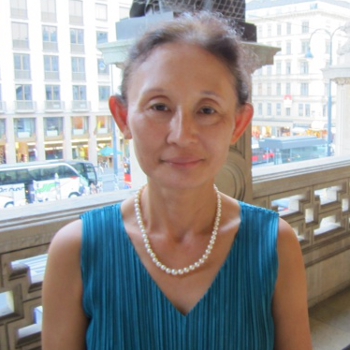Director Richard Eyre and his set designer Rob Howell seem fond of rotating sets. Their new production of Le nozze di Figaro, which opened the Met season last week, prominently features a set on a turntable to depict the house and garden of Count Almaviva. The turntable device was also used in their 2009 production of Carmen, revived here with a winning cast of singers and a snappy and agile orchestra led by Pablo Heras-Casado.
Premiered in Paris in 1875 to mixed reviews, Carmen was a “modern” opera at that time as it attempts to create a narrative full of dramatic and at times “exotic” melodies to propel the story, while paying tribute to the operatic traditions of arias and duets. The first two acts are especially full of music with abrupt shifts in key and moods; Carmen’s two solo pieces in Act I are the prime example. The other three principal characters – Don José, Micaëla and Escamillo – each has a more traditional aria. While they are all showstoppers, if sung well, they really do hold up the action and give the audience a chance to take a breath and contemplate the drama at hand.
Anita Rachvelishvili reprises the role of Carmen. With her dark hair and eyes, she embodies the character. She opens her mouth and produces gorgeously rich sounds effortlessly while acting the part of the seductive and wilful gypsy. At the beginning of Act II, she and her companions Frasquita and Mercédès superbly execute choreographed dancing while singing their gypsy song. Her dark mezzo is consistently large but never loud or strident; one might wish for a little more nuance and subtlety, but her superb singing and stage presence makes her one of the definitive Carmens of today.
If Rachvelishvili presents a passionate and smothering Carmen, her Don José, portrayed by Aleksandrs Antonenko, with a somewhat stiff demeanor and at times metallic voice, is a more repressed and outwardly detached character. His voice is that of a dramatic spinto tenor capable of producing a remarkable series of high notes. It took him a while to warm up this evening, and while his duet with Micaëla in Act I was beautifully executed, the Flower Song in Act II showed a lack of legato singing. All the notes were there, but they were at times choppy and failed to convey the sense of longing. On the other hand, he used his soft voice effectively at times to convey tenderness, for instance in his singing of his mother in Act III.
While the first half of the performance seemed somewhat tentative, the drama came alive in the second half as the two main characters begin their inevitable march towards their doom. The set for Act III is probably the most successful of the four as it shows the smugglers’ hideout in the mountains in the background, with steep steps on each end which the smugglers (and later Micaëla) tread to descend to the ground. The music in this act takes on the role of a character, signaling the doom and desperation even before the characters become aware of their fate.
Anita Hartig’s Micaëla is a breath of fresh air in the dark drama, and her clear and beautiful soprano with a hint of warmth is a perfect instrument for an innocent but determined peasant girl. Her Act III aria combined her fear and hope with elegant phrasing and poignant high notes, and she deservedly brought down the house. Massimo Cavalletti has a deep and gravelly bass, and while he sang Escamillo’s signature aria well enough, the voice seems to lack the agility, and his characterization was short of charisma. All the smaller roles were sung and acted well, notably Keith Miller's Zuniga, Jennifer Johnson Cano's Mercédès and Kiri Deonarine's Frasquita.
It is in the last act duet with Carmen that Antonenko seemed truly to become the character of Don José. His plea to Carmen was initially more brooding, quiet and internal, as if he was singing to himself. Only as he realized that Carmen was truly abandoning him did his singing become impassioned, desperate and heartfelt. His voice thundered freely and loudly, his high notes full of squillo. Ms Rachvelishvili played Carmen as knowing and accepting of her fate from the very beginning of the duet, darkly mocking his desperate attempt at reconciliation.
Heras-Casado led the orchestra in a brisk but well controlled prelude, and drew consistent and sensitive playing from the musicians, especially the woodwinds. He was able to tease out minute and subtle details from the score throughout, and the Act I barrack scenes, populated with soldiers and cigarette girls, were especially notable in their luxurious pacing and superb coordination with the chorus. Except for a slight hint of coordination issues with the quintet in Act II, he showed superb command of the score, and was an insightful and supportive leader for the singers.
The Met Chorus has shown a remarkable improvement over the last several years under Chorus Master Donald Palumbo, and the new season seems to take the group to another level of excellence, especially the men. The crowd scene in the first and fourth acts, played downstage with the rotating set taking up a large part of the stage, is handled very well with the chorus of men, women and children singing and acting with vigor and beauty to complement the tragic drama.
It was nice to see the director and his set designer, in New York for new Figaro production, take the final bow with the cast. No doubt their presence during the rehearsal process has benefited this revival of Carmen.




